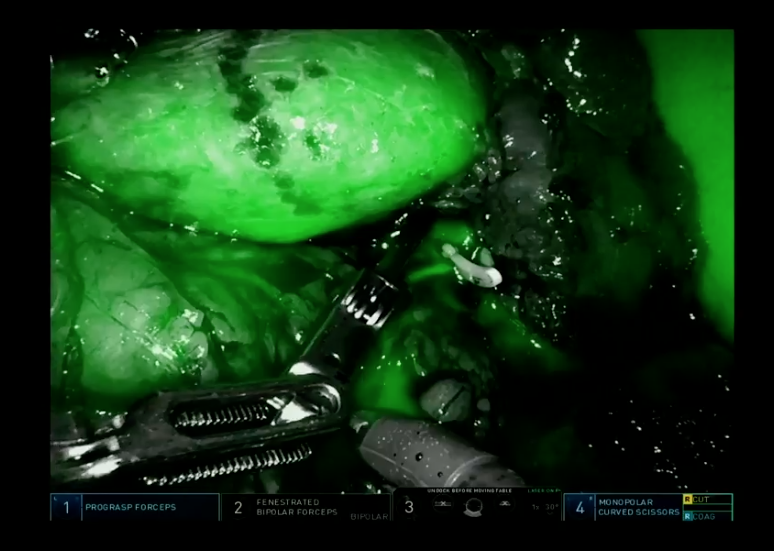Samit D. Soni, MD, presented “Fancy New Tools and Techniques Applied to Challenges in Robotic Partial Nephrectomy” during the 23rd Annual Innovations in Urologic Practice on September 14, 2018 in Santa Fe, New Mexico.
How to cite: Soni, Samit D. “Fancy New Tools and Techniques Applied to Challenges in Robotic Partial Nephrectomy” September 14, 2018. Accessed [date today]. https://dev.grandroundsinurology.com/fancy-new-tools-and-techniques-applied-to-challenges-in-robotic-partial-nephrectomy/
Fancy New Tools and Techniques Applied to Challenges in Robotic Partial Nephrectomy – Summary:
Samit Soni, MD, discusses challenges encountered during robotic partial nephrectomy and various tools and techniques that can improve outcomes. In addition, he demonstrates traditional transperitoneal and retroperitoneoscopic techniques for access to the kidney for partial nephrectomy, noting relative indications for each approach.
Abstract:
During partial nephrectomy, surgeons encounter challenges exacerbated by patient characteristics and prior surgery, vascular factors, and renal or tumor factors. Many tools beyond the main robotic system can aid surgeons in addressing challenging cases. For example, bariatric cannulas, a robotic visual obturator, the AirSeal® System, drop-in ultrasound probes, robotic bulldog clamps, Firefly technology, and CT imaging on the robotic system’s console can each play a role in partial nephrectomy. These tools enhance the surgeon’s understanding of anatomy and blood supply to optimize surgical resection.
This presentation includes video demonstrations of a drop-in ultrasound probe and bulldog clamps, as well as Firefly imaging to confirm ischemia, identify vasculature, and confirm perfusion post-renorrhaphy.
In addition to these tools, surgeons can employ various techniques to improve outcomes in complex partial nephrectomy scenarios. The patient’s prior surgical history and tumor anatomy should dictate decision-making when choosing to use a traditional transperitoneal or retroperitoneoscopic approach for accessing the kidney. A transperitoneal approach is ideal for anterior and lateral tumors. However, using this technique on patients with prior surgery can cause adhesion issues. Conversely, the retroperitoneoscopic technique is ideal for posterior, upper pole, and interpolar tumors. However, the procedure can be disorienting for surgeons early on the learning curve, and lead to higher carbon dioxide absorption. This presentation includes detailed instructions of best practice methods in a retroperitoneoscopic partial nephrectomy.
About Innovations in Urologic Practice
Innovations in Urologic Practice (IUP) is an annual CME-accredited conference devoted to updating urologists on the rapidly changing healthcare environment. Topics focus on innovative diagnostic and treatment strategies, controversies, new and currently developing technologies, and challenges in today’s urologic practice. Dr. Soni presented this lecture during the 23rd IUP in 2018. Please visit this page in order to learn more about future IUP meetings.





